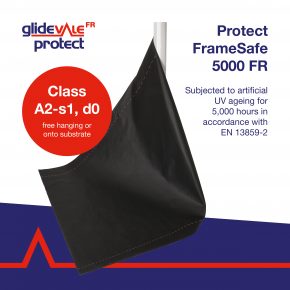
New BS 5534 for pitched roofing takes effect
Buildingtalk GUEST BLOG
Ged Ferris, Marketing Manager of Cembrit
New Standard for Pitched Roofing
Since the end of February 2015 it has been mandatory for the roofing industry to adhere to the new guidance published in the latest update to BS 5534. This is one of the British Standards of Codes of Practice which have existed since 1942 to provide guidance for those engaged in the design and construction of buildings. In those seventy odd years the BSI Group has published many thousands of standards and today there exist over 27,000 in total. The Codes of Practice exist to provide a degree of uniformity in the quality for goods and services available and based on a mixture of scientific data and practical experience. They can evolve over time and are updated when necessary. The British Standard for Slating and Tiling, BS 5534, is a key Code of Practice for the roofing industry and was updated in August 2014 and has been mandatory since the end of February 2015.
There are three main areas of change to the BS 5534. The main areas affect the practice of mortar bedding, underlays and fixing. Of the three main areas of change to BS 5534, the one which is likely to have the most impact is the higher theoretical wind uplift calculations that will need to be made to ensure compliance. The main driver for this is the increase in the instance of extreme weather events we have been experiencing in the UK in recent times. Hurricanes, wind-driven rain and flooding have all become more common, and all can exact a price on the built environment in general, and especially roofing. Furthermore, the update to BS 5534 brings the UK into line with the rest of the EU as the equivalent standards on wind uplift have been traditionally been tougher on the continent.
The changes to wind uplift calculations in BS 5534 have an impact on how roof coverings are fixed. This significantly affects the fixing of single lap tiles which will all have to be fixed with a clip or nail. In effect, the practice of tiling will fall into line with slating. The need to fix each slate in place with a hook or nail is something that the slating trade understands and is standard practice. This process takes longer for obvious reasons and adds time to an installation. The upshot of this is that the generally perceived time-saving benefits that tiles have traditionally enjoyed over slates no longer exist.
Fixed ideas
Good workmanship is the foundation of a successful slate roofing projector indeed all roofing projects and using the correct fixing method is an essential part of the project. There are two methods for fixing slates nail and hook. Using the hook fixing method for slates has been popular in Europe, particularly France, for the past fifty years. It is becoming increasingly popular in the UK and can be used for both natural and fibre cement slates. When hook fixing is the chosen method, it is important to check the quality of steel and thickness of hook used as there are hooks that will eventually rust or even break down. Cembrit hooks are black stainless steel, designed to the British Standard BS 1554:1990 S316 which hold the slate secure and maintain their finish, whatever the environmental conditions.
Cembrit recommends nails used for fixing slates should be copper. Yes, they do cost more, but if the client is spending many thousands of pounds on a new roof, it is worth spending the extra on copper nails. To put it in perspective, a slate roof will last for 80-100 years and copper nails will last the lifetime of the roof. For that reason they are a very sound investment for anyone who takes pride in their job and thinks for the long term.
Making the Cut
Cutting tiles or slates is an important part of any roofing project and BS 5534 recommends that small tiles cuts should be mechanically fixed or bonded. While speaking of cutting, it is worth noting that when installing roof tiles, controlled cutting is required, and roofing contractors are required to work with full wet cutting systems and respiratory protective equipment to limit the amount of dust created. The recommended way of supplying water is by using a portable polypropylene hand pump bottle that contains around eight litres of water with a minimum flow rate of around 0.5 litres per minute. Contractors are expected to follow this procedure on the ground or on the scaffolding around the property, as opposed to being undertaken on the roof slope.
Working in this way requires that arrangements for equipment availability are in place, putting an additional burden on the time-pressed contractor. Contractors also need to ensure that enough water is available. Furthermore, dedicated cutting areas need to be established and set up on the surrounding scaffolding before any work begins. For the roofing specifier, it is now essential to give due consideration to these issues and possibly look for alternative roof coverings if the demands of the legislation cannot be satisfied. Fibre cement slates are an excellent alternative to concrete tiles as they can be cut with hand tools.
We at Cembrit welcome the new changes to BS 5534. With an eighty year involvement in the slate business, we look forward to our partner distributors and contractors disseminating the best in practice and craft of slating to the rest of the pitched roof industry.
Ged Ferris is Marketing Manager of Cembrit
LINK TO SEND YOUR COMMENTS TO BUILDINGTALK
READ MORE BLOGS
Latest news

26th November 2024
Crown Paints supports restoration of renowned local landmark
Over the past three months, Crown Paints has supported the transformation of St. Mary’s Lighthouse, a much-loved historical landmark on the North Tyneside coast.
Posted in Articles, Building Industry News, Building Products & Structures, Case Studies, Interiors, Paints, Paints, Coatings & Finishes, Restoration & Refurbishment, Retrofit & Renovation
26th November 2024
Keller Kitchens extends carbon farming collaboration
Since 2021, DKG (parent company of Keller Kitchens and Bruynzeel) and ZLTO (association of farmers and horticulturists in the Dutch provinces Zeeland, North Brabant and South Gelderland) have been working together on a five-year pilot project – ‘Carbon Farming for CO2-storage in farmland’.
Posted in Articles, Building Associations & Institutes, Building Industry News, Building Products & Structures, Building Services, Facility Management & Building Services, Innovations & New Products, Interiors, Kitchens, Restoration & Refurbishment, Site Preparation, Sustainability & Energy Efficiency, Waste Management & Recycling
26th November 2024
Vent-Axia Offers Ventilation Solutions for Landlords to Tackle Condensation and Mould
Leading British ventilation manufacturer Vent-Axia can offer expert advice and a range of ventilation options to help landlords meet new legislation…
Posted in Air Conditioning, Articles, Building Industry News, Building Products & Structures, Building Regulations & Accreditations, Building Services, Damp & Waterproofing, Facility Management & Building Services, Health & Safety, Heating Systems, Controls and Management, Heating, Ventilation and Air Conditioning - HVAC, Retrofit & Renovation
26th November 2024
Glidevale Protect expands its fire rated wall membrane range
Glidevale Protect has strengthened its flame retardant offering with the launch of its Protect FrameSafe 5000 FR external wall membrane designed for open façade cladding applications.
Posted in Articles, Building Industry News, Building Products & Structures, Building Regulations & Accreditations, Building Services, Cladding, Facades, Health & Safety, Innovations & New Products, Membranes, Restoration & Refurbishment, Retrofit & Renovation, Walls
 Sign up:
Sign up: